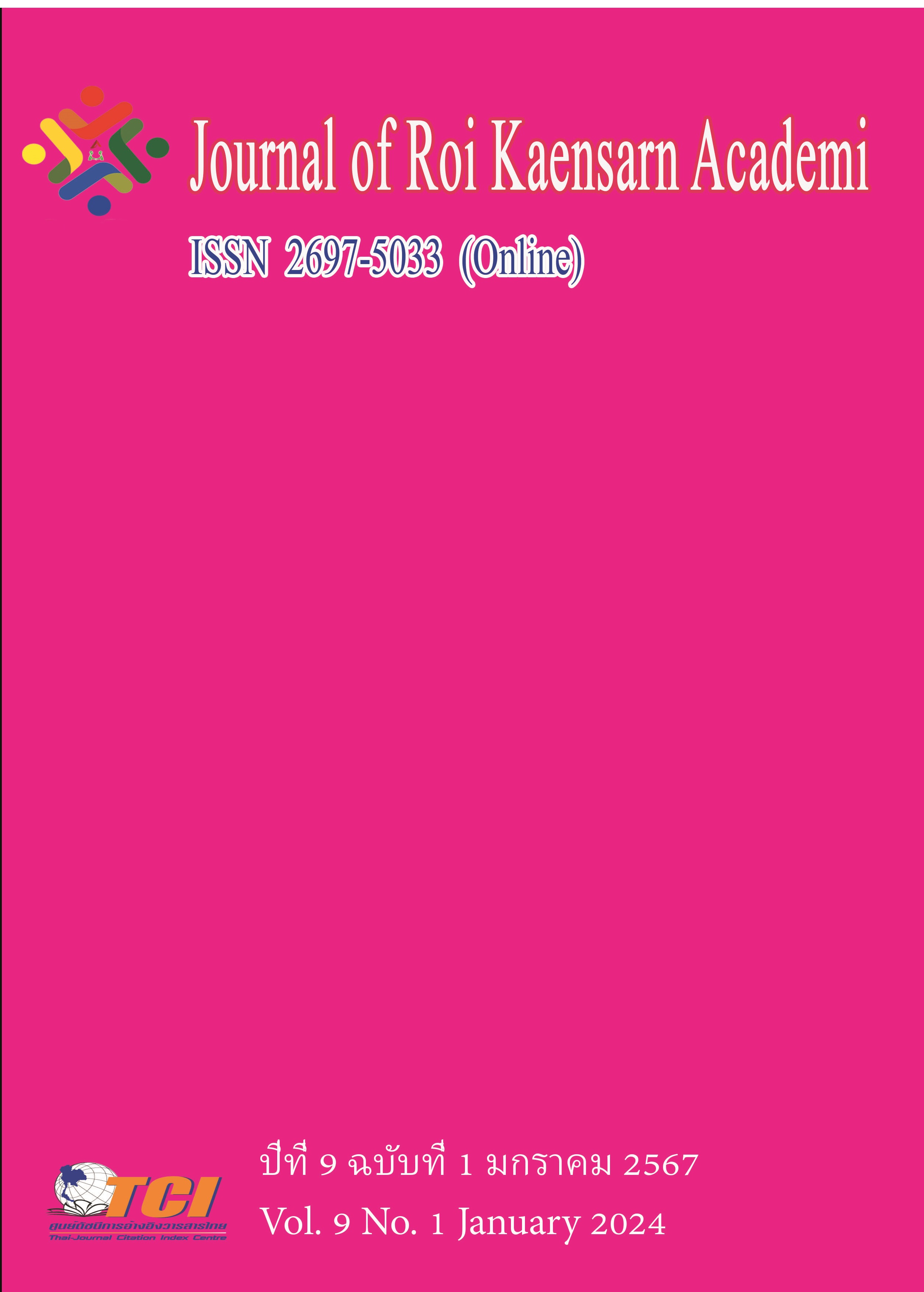A Study on the Dance Form of Yangko in Changli, Hebei, China
Main Article Content
บทคัดย่อ
The emergence and development of Yangko are closely related to human activities. Initially, Yangko was a piece of music that people hummed during the process of labor. In later development, it further absorbed various arts such as agricultural songs and folk art, gradually becoming a folk dance with performance characteristics. Yangko is a very typical folk dance of the Han ethnic group and an important component of their daily life. Hebei Province, China is one of the important birthplaces of Yangko art, with unique and diverse forms of Yangko. Among them, Changli Yangko is the most regional and was selected for national intangible cultural heritage protection in 2008.
This article adopts a combination of theoretical discussions and case analysis methods, and proposes its own views and insights through the sorting and analysis of relevant theories and research results. Case analysis is an in-depth study and analysis of the performance of Yangko in Changli, exploring the artistic forms, characteristics, and connotations of Yangko. In terms of research content, this article takes Changli Yangge in Hebei Province as the object of investigation and research, and takes the dance form characteristics of Changli Yangge as the starting point to explore the interactive relationship between Hebei Yangge and rural society and rural life, revealing the mutual influence of Yangge art and social culture.
Article Details
เอกสารอ้างอิง
Huang Jun and Xu Xi (2009). A Dictionary of Peking Opera. Shanghai Dictionary Publishing House.
Cao Chunyan .(2018). The Evolution and Development of the Inheritance Method of Changli Yangko. Industry and Technology Forum, (06), 122-123.
Feng Aiyun and Feng Guoqun (2010) .Analysis of Cultural Images and Social Functions of Hebei Folk Dance. Journal of Hebei University of Physical Education, 24 (1), 15.
Han Jianlong. (2006) .On" Dwarf Skill "and Its Application. Data Moon Shadow, (02), 73.
Huang Jiying and Gao Jing. (2021).Chinese Exploration of Dance Form Analysis Methods. Journal of Ethnic Art Research. 34 (05), 144-152
Li Chao. (2017). Laban in China. Dance, 09, 10-19.
Zhang Lina and Jin Honglian. (2011) .LMA Analysis of the Artistic Characteristics of Ugly Body Actions in Changli Yangko. Science and Education Literature, 06139-141.
Ann Hutchinson Gaist. (2013). Laban notation action analysis and recording system. China Foreign Translation Publishing House Co., Ltd.
Teng Yuntao and Tian Guoan. (2012). Changli Yangge. China Drama Publishing House.
Yuan He (2019). History of Chinese Dance. Higher Education Press.
Yang Fei (2019). Hebei Folk Traditional Dance Tutorial. Wuhan University Press.
Zhou Daming (2009). History of Hebei Dance. Science Press.
Editorial Committee of Chinese Dance Chronicles (2002). Chinese Dance Chronicle, Hebei Volume. Xuelin Publishing House.
Integrated Editing Department of Chinese Ethnic and Folk Dance. (1989). Integrated Chinese Ethnic and Folk Dance - Hebei Volume. China Dance Publishing House.
Bai Yu. (2020) .On the uniqueness and role of" clowns "in Changli Yangko" (paper published). Footprints of Struggle - Dedicated to the 15th Anniversary of the Founding of Tianjin College, Beijing University of Science and Technology, Tianjin, China.
Liu Jinwei. (2020). "Environment, Context, and Mood" (Master's Thesis, Yanshan University). China National Knowledge Infrastructure.
Qi Liyuan (2016). "Research on Yangko in Changli, Hebei Province from the Perspective of Folklore Studies" (Master's Thesis, Anhui University).
Song Ran. (2020). "Aesthetic Research on the Changes of Changli Yangko Dance Style" (Master's Thesis, Yanshan University). China National Knowledge Infrastructure.
Tian Jiao. (2014). "The Character Composition of Chinese Folk Dance - A Study on the" Niu "," Chou ", and" Hu "in Changli Yangge" (Master's Thesis, Beijing Dance Academy). China National Knowledge Infrastructure.
Xinming (2020). "Research on the Laws of Laban Movement Theory" (Doctoral Dissertation, Chinese Academy of Art). China National Knowledge Infrastructure.

